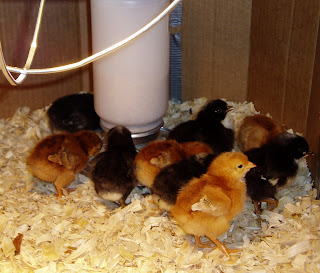It was my goal from the start of my Backyard Nest Egg project to learn to make compost. I have always gardened without chemical fertilizers, usually with purchased commercial chicken manure. (When I started my first garden back in 1981, I got a lot of advice from a friend’s mother. This woman had decades of experience growing her own food, beginning in her childhood in rural Kentucky. She had a fantastically productive garden and swore by chicken manure, so I followed her lead.)
Since I hadn’t yet hatched the crazy chicken project, and I wanted to minimize purchased inputs, I needed to learn how to make my own fertilizer by composting vegetable waste from the kitchen, egg shells, coffee grounds (a great source of nitrogen), fallen tree leaves, and other appropriate materials. As always, my first concern was odor. It was hard for me to believe that rotting refuse would not “stink to high heaven,” to use one of my mother’s phrases. However, if mixed in the right proportions, about four parts “dry” or “brown” materials to one part “wet” or “green” you won’t have any problems. In fact, if your compost pile does stink, it’s a sure sign you need to adjust your mix.
The best book I’ve found on how to do it is Mike McGrath’s Book of Compost. This guy is so enthusiastic about the benefits of compost, you can’t wait to get started on your own steaming pile of garbage. It’s a small volume in which McGrath explains clearly, succinctly, and with humor, how to make compost, various ways to speed up the process, such as building a “compost chimney,” and how best to use the finished product.
The next step was deciding what type of compost bin to use. I immediately ruled out the traditional open, three bin system. It’s unattractive (aesthetics is always a consideration for me) and takes up too much space. The city was selling Earth Machine composters (similar to the photo above left) and these at first seemed a great idea. They’re covered plastic bins with lids that twist and lock to keep animals out, and they take up little space.
However, after buying and using one, I realized the Earth Machine has two serious design problems. First, it is difficult to turn the compost in one of those bins. The bin is tapered, wider at the bottom than at the top. The result is a top opening too small to get the angle I need to easily move a tool through the compost. We even bought one of those metal compost aerators, but I found it less useful than a hoe for adequately moving the compost. Basically, you move the aerator through the compost like you’re churning butter. However, it takes a lot of effort and seems to move little of the material. Even using a hoe, it was serious WORK to thoroughly turn the pile.
The second problem is getting your compost out. The Earth Machine has a little door at the bottom for removing compost, but it’s rather small. You can’t get a full-size shovel through there. I found myself scrabbling around on the ground to get the stuff.
I suppose I could have just removed the bin and scooped up the compost. However, the thing is secured to the ground with heavy plastic pegs. I’d have to pry those up first, and then what if I didn’t want to use all the compost at that moment? I’d have to get the bin back over a shifting pile and pound the pegs in again.
The ideal solution for me is the tumbling composter. Basically, these are barrels with a rod through the center on which the barrel turns. (See photo above.) These are fantastic labor-savers. Instead of turning big loads of material with a pitchfork (three-bin method) or laboriously churning the contents of an Earth Machine with the ineffectual aerator tool, you merely spin the barrel on its rod. This both makes the chore easier now, and enables me to continue this task into old age. When I want to remove the contents, I just take off the lid, and tip the barrel. I can empty the whole load into a wheelbarrow, or pour out just a bucketful.
Ads for commercially produced tumbling composters generally claim that they make compost faster than other composters. Mother Earth News staff tested this claim and concluded that tumblers produce compost faster only because gardeners turn them more frequently than compost in other types of bins. If you build two compost piles of roughly the same size and ingredients, one in a tumbler, and one in another kind of bin, and turn both piles with the same frequency, they will produce finished compost at the same time.
Commercially produced tumbling composters are ridiculously expensive, with prices of $200 or even $300. However, they are relatively simple to make - (check out this video on YouTube) – provided you can lay your hands on a barrel. That was my stumbling block. Maybe I wasn’t looking in the right places, or I just don’t have the right contacts, but I couldn’t find one.
Eventually, I found a local guy on Craigslist who builds composters (including the one in the photo above) from barrels he acquires from an undisclosed source. (Even he claimed he was having trouble getting barrels this year.) We bought his last two composters. I keep them behind the chicken coop, where they are handy, but out-of-site, and turn them often.





